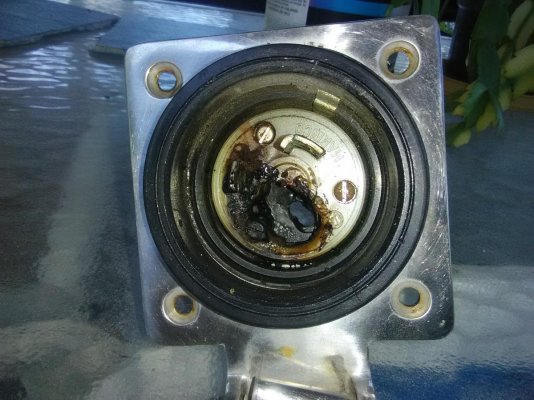Howard Arner
Member
- Joined
- Sep 7, 2018
- Messages
- 16
- Location
- USA
- Vessel Name
- The Boardroom
- Vessel Make
- 1983 Marine Trader Labelle 43
Well, we started living aboard on December 17th the day we knocked the house down, (she was flooded by Irma). We bought the boat and spent four months refitting her for live aboard, mostly fixing a number of electrical issues to do with a blown inverter, fixing the typical marine trader window leaks and installing a Type I MSD so pumping is not necessary.
The first month went well, but the second month we had problems with the 50 amp breaker on the temp pole for the dock. It went from once every two weeks tripping, to daily so we got a replacement. No more pole tripping.
However, a week or so goes by and now one of the thirty amp breakers on the panel tripped about once every three weeks or so, then every two, then once a day, the more. We started better power management and it was better, but it still tripped on occasion. I called my Marine Electrician. He came out, looked at the breaker and pronounced it OLD and ordered a new one.
The new one broke on entry, bad plastic mold, but his assistant kept complaining about how hot the old one was. So, the electrician checked the cables and boom.

So, $500 new shore cables, new inlet, new breaker and we are OK. Never smelled it once! Moral, do not ignore the breaker, it is trying to tell you something. No internal wires were melted, only the inlet and the shore power cable.
The first month went well, but the second month we had problems with the 50 amp breaker on the temp pole for the dock. It went from once every two weeks tripping, to daily so we got a replacement. No more pole tripping.
However, a week or so goes by and now one of the thirty amp breakers on the panel tripped about once every three weeks or so, then every two, then once a day, the more. We started better power management and it was better, but it still tripped on occasion. I called my Marine Electrician. He came out, looked at the breaker and pronounced it OLD and ordered a new one.
The new one broke on entry, bad plastic mold, but his assistant kept complaining about how hot the old one was. So, the electrician checked the cables and boom.
So, $500 new shore cables, new inlet, new breaker and we are OK. Never smelled it once! Moral, do not ignore the breaker, it is trying to tell you something. No internal wires were melted, only the inlet and the shore power cable.

